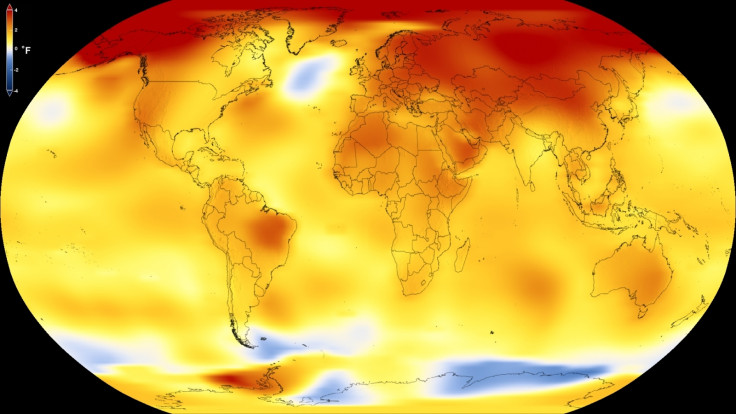Nasa: 2017 was the second warmest year on record as global warming trend continues
The top three hottest years have all happened after 2010.
Nasa has declared 2017 as the second warmest year on record since the late 1800s when climate records were first started, after 2016. Without the warming influences of El Niño, 2017 is the hottest year on record, the space agency said in a report.
Nasa's study reportedly incorporated 6,300 weather stations from around the world, ship and buoy-based observations for sea level surface temperatures, and temperature recordings from the Antarctic.
The study was undertaken jointly by Nasa and National Oceanic and Atmospheric Administration (Noaa). They released a statement stating that Earth's long-term warming trend is continuing on an upward slope.
The average global temperatures in 2017 were found to be 0.90 degrees Celsius warmer than the mean 1951 to 1980 levels. This level is second only to 2016, according to the study conducted at Nasa's Goddard Institute for Space Studies (Giss) in New York.
Global average temperature is calculated by comparing the data from global weather stations and data for sea and Antarctic temperatures with a baseline set between 1951 and 1980. All of the data and methodology can be found at Nasa's site.
Meanwhile, for the third year in a row, global average temperatures were more than 1 degree Celsius higher when compared to late 19th century levels.
In a separate analysis carried out by Noaa, it was reportedly found that 2017 was the third warmest year in their records. This difference in ranking is because of the different methods and data sets from weather stations that the two agencies use to measure temperature rankings, Nasa said, noting that even after taking these differences in account, 2017 estimate is accurate to within a 0.1 degree Fahrenheit, and a 95% certainty level.
Over the long-term, both agencies and their recorded data "remain in strong agreement", the agency added. Both records show that the five warmest years in record have all happened after 2010.
"Despite colder than average temperatures in any one part of the world, temperatures over the planet as a whole continue the rapid warming trend we've seen over the last 40 years," said Giss director Gavin Schmidt.
Over the last century, the average surface temperature has risen by a little over one degree Celsius and this change in temperature can be directly traced back to increasing carbon dioxide levels and the dumping of other human made emissions, Nasa noted.
El Niño and El Niña influences in the upper tropical Pacific regions cause warming and cooling in global temperatures, but they are only short-term effects, it added. The cycle comprising 2015 and first few months of 2016 was under El Niño — warming oceans — that contributed to the warmth that the planet experienced. By the end of 2017, the Pacific was under El Niña — cooling oceans, but the temperatures stayed between the 2015-2016 levels, scientists found.
Because of how dynamic weather is throughout the planet, Noaa noted that not every part of the Earth received an equal amount of temperature rise. The 48 states in mainland US saw an annual mean temperature rise that made 2017 the third warmest year on record.
Warming trends were found to be the strongest in the Arctic circle with rapid loss of ice recorded over the year.






















